- Our mission is to be the primary source of adult education in the northern half of the Pioneer Valley, to provide low-cost, high-quality, open-admission education in a small college environment and to participate in transforming our region into a knowledge-based economy and to prepare our students to live and work in the emerging global society.
School Highlights
Greenfield Community College serves 1,920 students (19% of students are full-time).
The college's student:teacher ratio of 9:1 is lower than the state community college average of 12:1.
Minority enrollment is 30% of the student body (majority Hispanic), which is less than the state average of 57%.
Quick Stats (2025)
- Enrollment: 1,920 students
- In-state tuition: $4,958
- Out-state tuition: $11,078
- Student:teacher ratio: 9:1
- Minority enrollment: 30%
- Source: Integrated Postsecondary Education Data System (IPEDS)
School Overview
The teacher population of 213 teachers has stayed relatively flat over five years.
Greenfield Community College
(MA) Community College Avg.
Carnegie Classification
Associate's Colleges: Mixed Transfer/Career & Technical-Mixed Traditional/Nontraditional
Associate's Colleges: Mixed Transfer/Career & Technical-Mixed Traditional/Nontraditional
Institution Level
At least 2 but less than 4 years
At least 2 but less than 4 years
Institution Control
Public
Public
Total Faculty
213 staff
290 staff
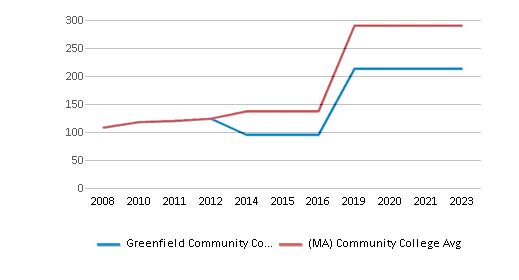
School Calendar
Student Body
The student population of Greenfield Community College has grown by 9% over five years.
The student:teacher ratio of 9:1 has increased from 8:1 over five years.
The Greenfield Community College diversity score of 0.49 is less than the state average of 0.74. The school's diversity has grown by 12% over five years.
Total Enrollment
1,920 students
2,106 students
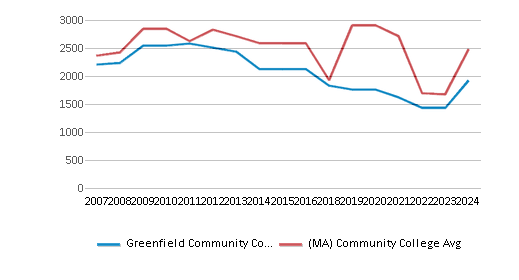
Student : Teacher Ratio
9:1
12:1
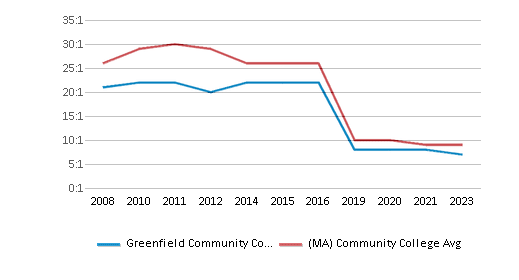
# Full-Time Students
365 students
1,039 students
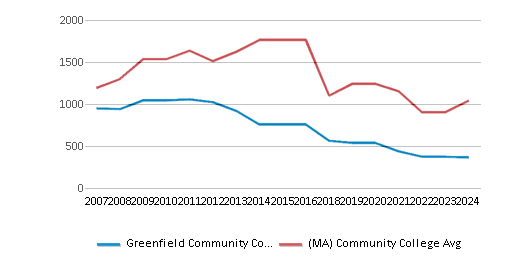
# Part-Time Students
1,555 students
1,619 students
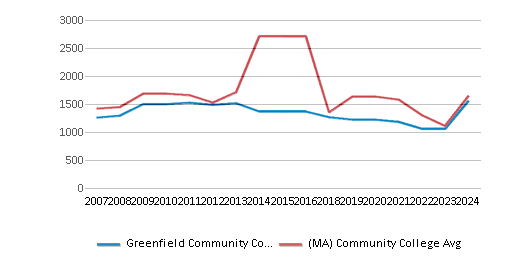
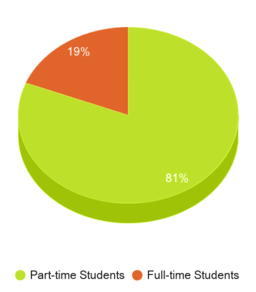
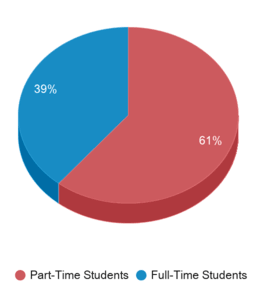
# Enrollment Undergraduate
192 students
278 students
# Full-Time Undergraduate Students
365 students
839 students
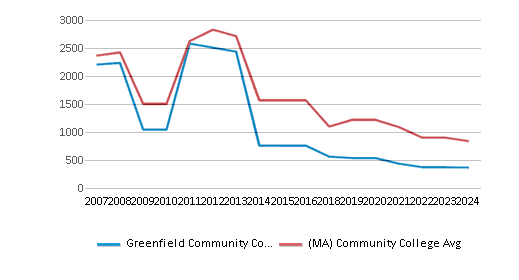
# Full-Time Graduate Students
n/a
99 students
# Part-Time Undergraduate Students
1,555 students
1,619 students
# Part-Time Graduate Students
n/a
83 students
Total Dormitory Capacity
n/a
443 students
% American Indian/Alaskan
n/a
n/a
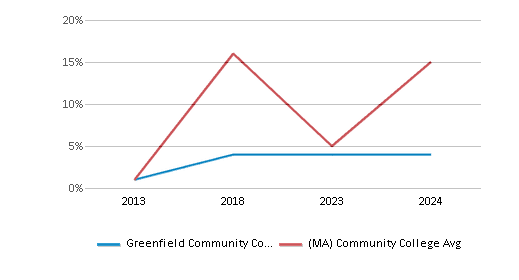
% Asian
4%
6%
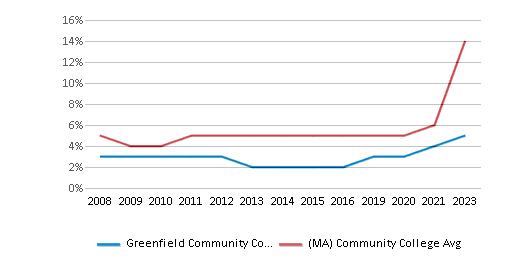
% Hispanic
11%
21%
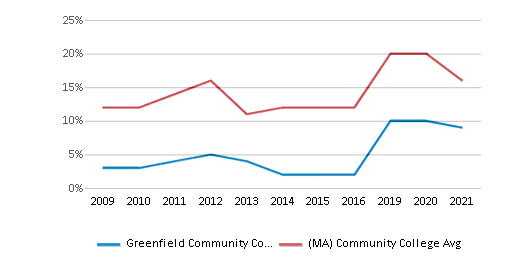
% Black
5%
15%
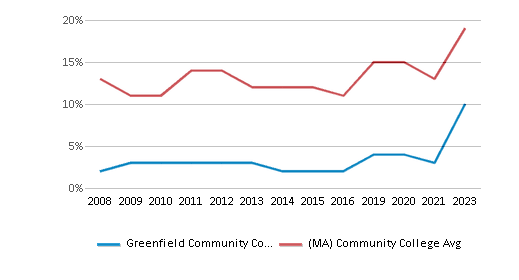
% White
70%
43%
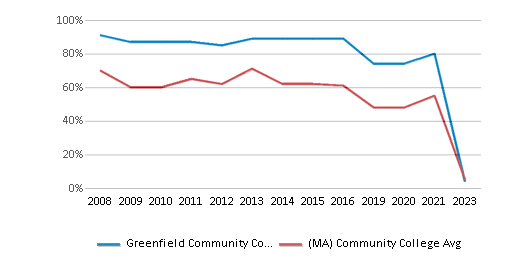
% Hawaiian
n/a
1%
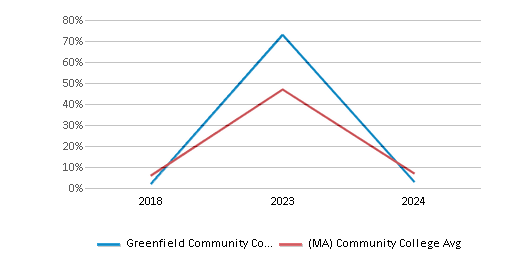
% Two or more races
4%
3%

% Non Resident races
n/a
2%
% Unknown races
5%
9%
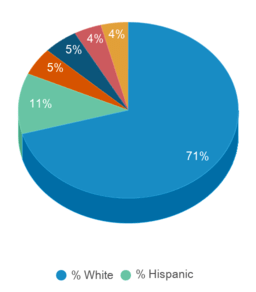
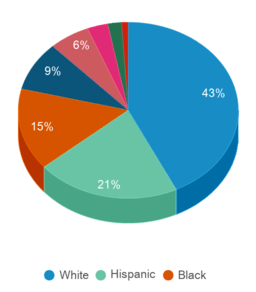
Diversity Score
0.49
0.74
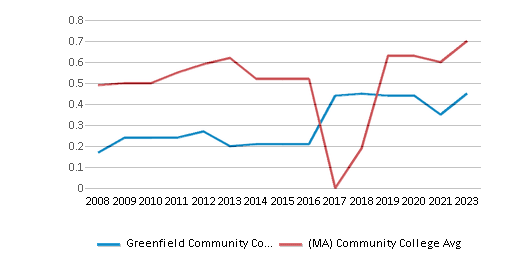
College Completion Rate (Students who graduate in less than 4 years)
0.3231%
0.2128%
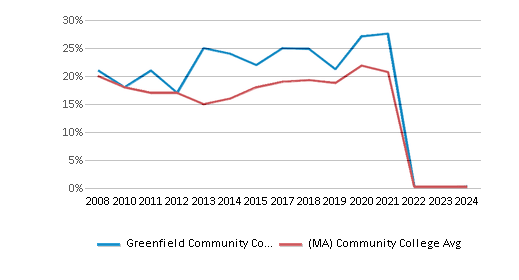
College Completion Rate (Students who graduate in 4 years or more than 4 years)
n/a
0.4706%
Average Graduate Earnings (10 Years)
$33,000
$35,500

Tuition and Acceptance Rate
The public in-state tuition of $4,958 is more than the state average of $4,424. The in-state tuition has declined by 10% over four years.
The public out-state tuition of $11,078 is more than the state average of $9,401. The out-state tuition has declined by 5% over four years.
In-State Tuition Fees
$4,958
$4,424
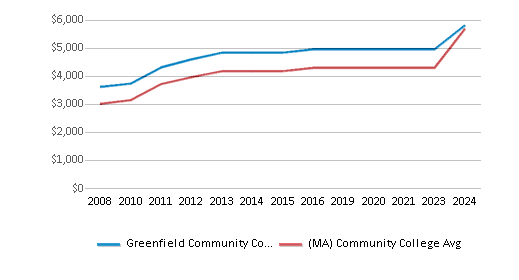
Out-State Tuition Fees
$11,078
$9,401
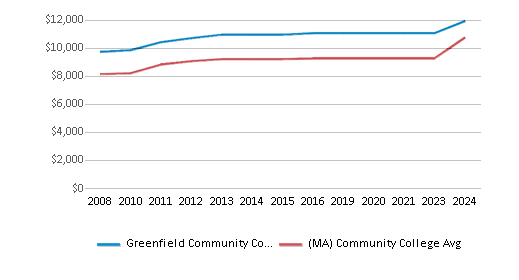
% Students Receiving Some Financial Aid
66%
87%
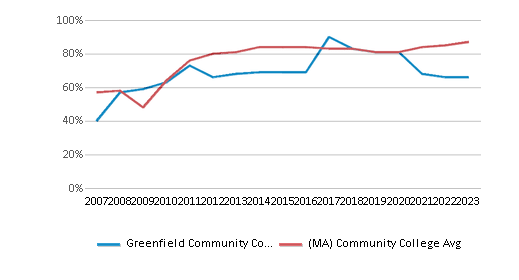
Median Debt for Graduates
$9,000
$12,000
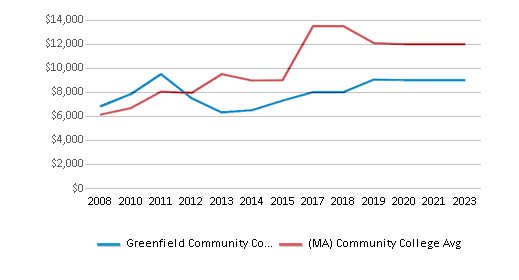
Median Debt for Dropouts
$4,137
$5,500
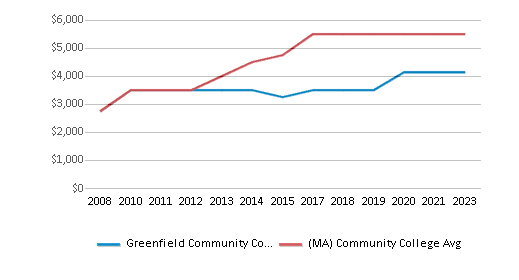
Acceptance Rate
n/a
75%
SAT Reading
n/a
540
SAT Math
n/a
535
SAT Writing
n/a
480
ACT Composite
n/a
21
Source: 2024 (or latest year available) Integrated Postsecondary Education Data System (IPEDS)
School Notes
- Located in the Pioneer Valley of western Massachusetts, Greenfield Community College was established in 1962 by visionary citizens who saw how a community college would enhance the quality of life and increase people's opportunities in the region. Today, the college's total annual enrollment is over 3,000. Greenfield Community College is one of 29 institutions, including 15 community colleges, that make up the Massachusetts public higher education system. We receive about 40 percent of our funding from the state. We are governed locally by a board of trustees appointed by the governor, and at the state level by the Higher Education Coordinating Council. The College serves an academically, economically, and culturally diverse student population primarily from Franklin and Hampshire counties in Massachusetts, and from southern Vermont and New Hampshire. GCC offers associate degrees for students planning to transfer to four-year colleges as well as associate degrees and certificates to prepare students to enter the knowledge-based workforce, especially in those fields most in demand in Western Massachusetts. Working closely with area businesses and other community partners, GCC provides job training and skills improvement as dictated by the rapidly changing regional and national economies. We are also committed to working in partnership with elementary and secondary schools in our region to better prepare students to pursue education beyond the secondary level. As the only college in Franklin County, GCC exists as the center of higher education in the region and, as such, is committed to providing cultural activities and life-long learning opportunities that enrich our entire service area. Greenfield Community College is accredited by the New England Association of Schools and Colleges.
Frequently Asked Questions
How much does Greenfield Community College cost?
Greenfield Community College's tuition is approximately $4,958 for In-State students and $11,078 for Out-State students.
Recent Articles

Obtaining Your Bachelor's Degree at a Community College
Explore the evolving landscape of community colleges offering bachelor's degrees, addressing affordability, accessibility, and workforce needs.

A to Z of Community College Certificates and Courses
From business and healthcare to technology and skilled trades, the article showcases the breadth of options available to students seeking to enhance their knowledge, develop new skills, or pursue career advancement.

What is a Community College?
This comprehensive guide explains what a community college is, its history, and its role in higher education. It covers the types of programs offered, differences from four-year colleges, benefits of attending, and important considerations for prospective students, providing valuable insights for those exploring educational options.











